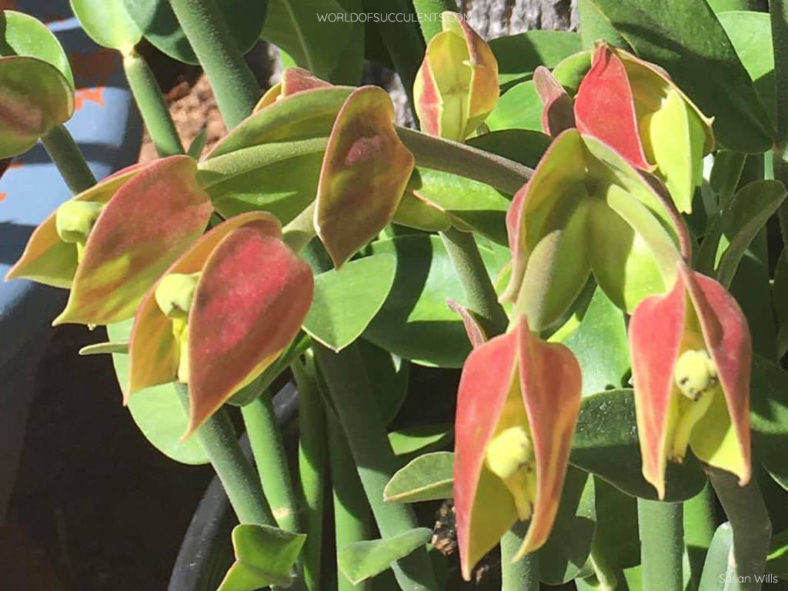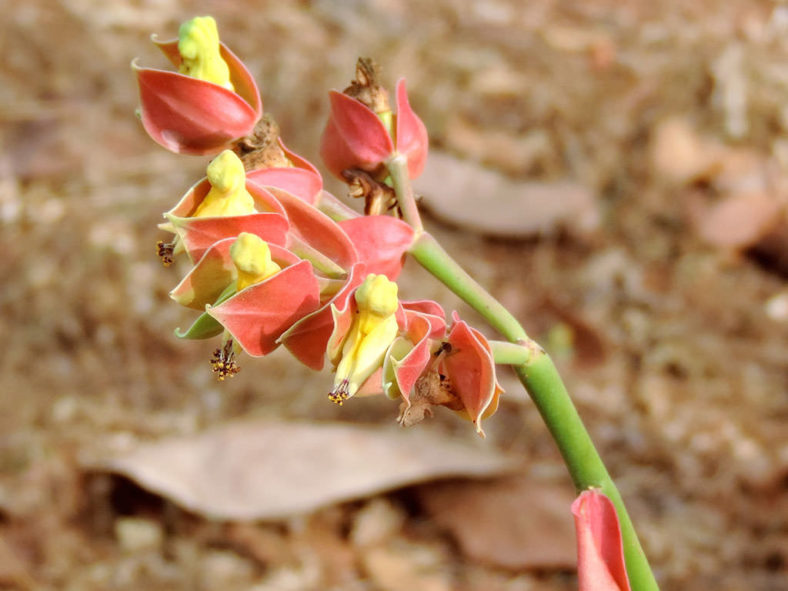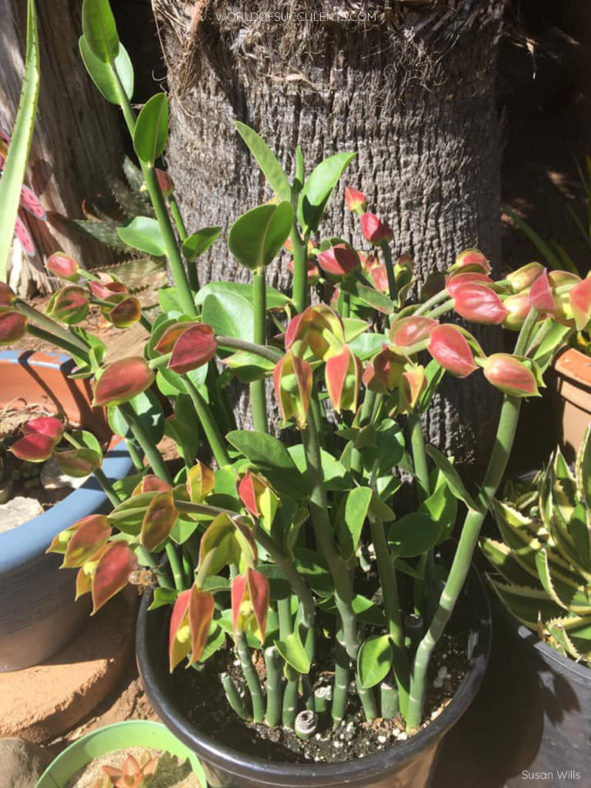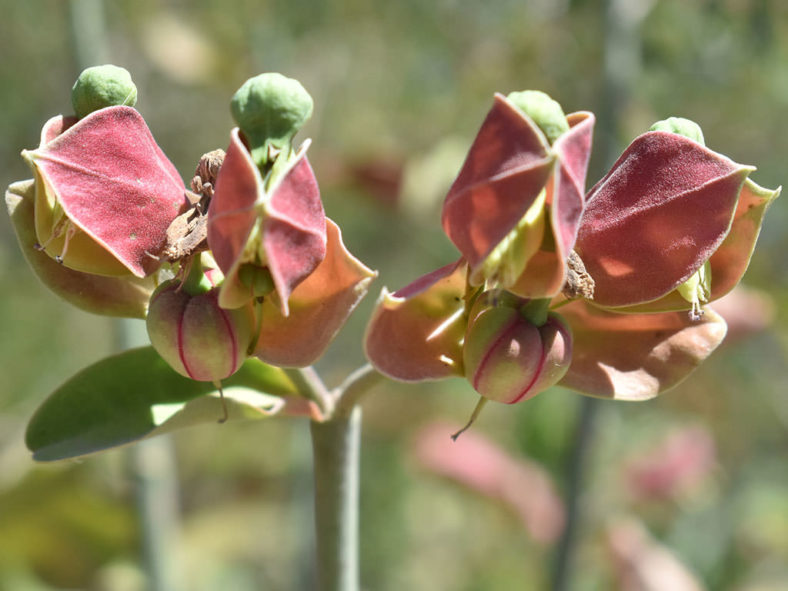Scientific Name
Euphorbia bracteata Jacq.
Common Name(s)
Candelilla, Little Bird Plant, Slipper Flower, Slipper Plant, Slipper Spurge, Tall Lady's Slippers, Tall Slipper Plant
Synonym(s)
Pedilanthus bracteatus, Tithymaloides bracteate, Tithymalus bracteatus, Ventenatia bracteata
Scientific Classification
Family: Euphorbiaceae
Subfamily: Euphorbioideae
Tribe: Euphorbieae
Subtribe: Euphorbiinae
Genus: Euphorbia
Etymology
The specific epithet "bracteata (brak-tee-AY-tuh)" means "having bracts" and refers to the red, leaflike structures (bracts) that surround the cyathia.
Origin
This species is native to Mexico. It occurs in dry deciduous woodland from Sonora to Guerrero.
Description
Euphorbia bracteata, formerly known as Pedilanthus bracteatus, is a succulent shrub with upright, narrowly cylindrical branches with glaucous green leaves that occur just near the branch tips. It can grow up to 8 feet (2.4 m) tall, basally clumping to nearly 6 feet (1.8 m) wide. All vegetative parts are often sparsely hairy. The stems are leafless before flowering. The leaves are ovate with a short petiole and a thick, prominent midvein on the lower surface. They can measure up to 4 inches (10 cm) long and 2.4 inches (6 cm) wide.
The cyathia are pale green to reddish, surrounded by attractive, large red bracts. They appear in clusters at the branch tips from late spring and summer through fall. The fruits are reddish, 3-locular capsules that can reach up to 0.5 inches (1.3 cm) in diameter.

How to Grow and Care for Euphorbia bracteata
Light: This succulent is a sun lover. Place your indoor E. bracteata in a sunny window. You may place the pot on the balcony or in the garden from spring to fall. Increase sun exposure gradually to prevent sunburn.
Soil: E. bracteata requires well-drained soil. Use a commercial potting mix formulated for succulents, or make your own.
Temperature: High summer temperatures are not a problem, but low winter temperatures can damage or kill your plant. E. bracteata can withstand temperatures as low as 25 °F (-3.9 °C). USDA Plant Hardiness Zones 9b to 11b, 25 to 50 °F (-3.9 to 10 °C).
Watering: From spring to fall, water when the soil's top inch (2.5 cm) feels dry. Reduce watering in winter. Give it just enough water to prevent wilting. The best time of the day to water your E. bracteata in the warm season is the evening.
Fertilizing: Plants in a pot need regular feeding. Apply a balanced fertilizer in a 10-10-10 NPK formulation, diluted to 1/4 strength weekly during the growing season.
Repotting: E. bracteata will benefit from repotting, but it does not need to be repotted yearly. When your plant is outgrowing its pot, it is time to repot it in a larger pot and give it a fresh potting mix. The repotting is best done in early spring, at the beginning of the growing season. Wear gloves, protective clothing, and appropriate eye protection when repotting this succulent.
Propagation: The easiest and fastest propagation method for this plant is by stem cuttings. It can also be grown from seeds, but it can be difficult for seeds to germinate. The best time to take cuttings is in spring or summer. Sow the seeds in spring.
Learn more at How to Grow and Care for Euphorbia.
Toxicity of Euphorbia bracteata
E. bracteata produces a toxic white milky sap that can cause irritation to the skin and eyes. Therefore, keeping your plant away from children and pets is best.
Links
- Back to genus Euphorbia
- Succupedia: Browse succulents by Scientific Name, Common Name, Genus, Family, USDA Hardiness Zone, Origin, or cacti by Genus
Photo Gallery
Click on a photo to see a larger version.


